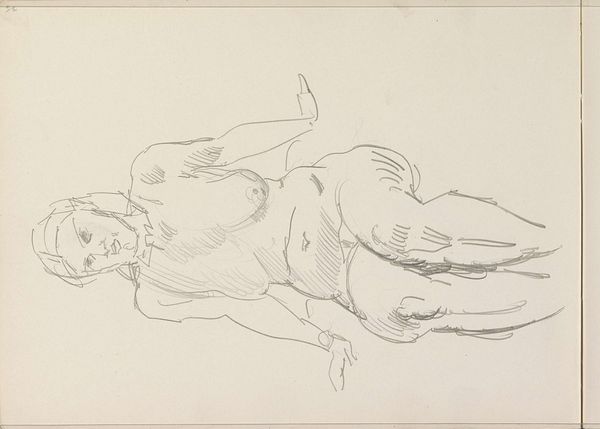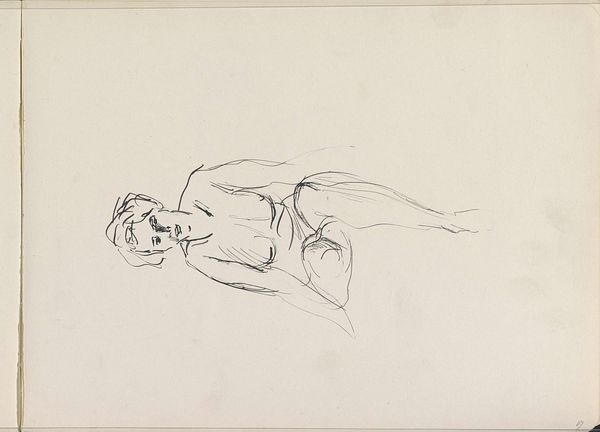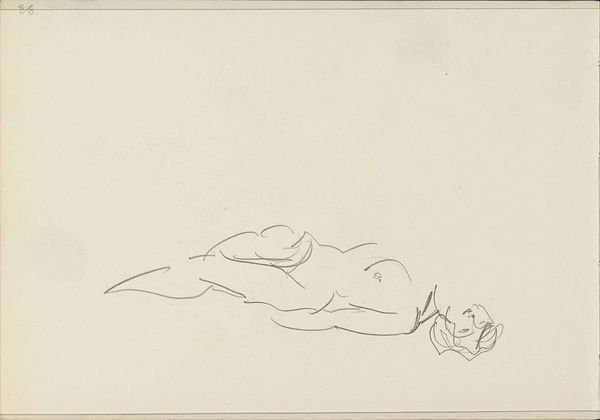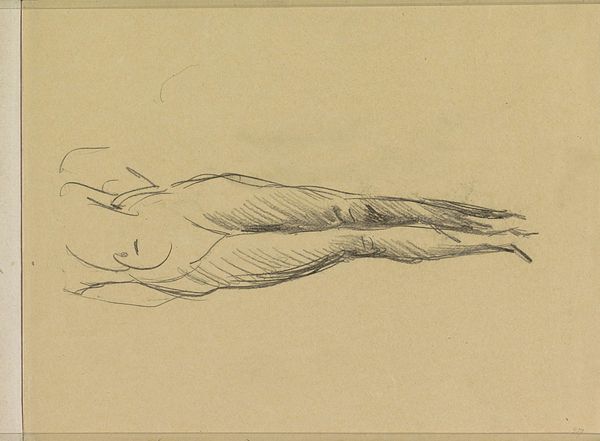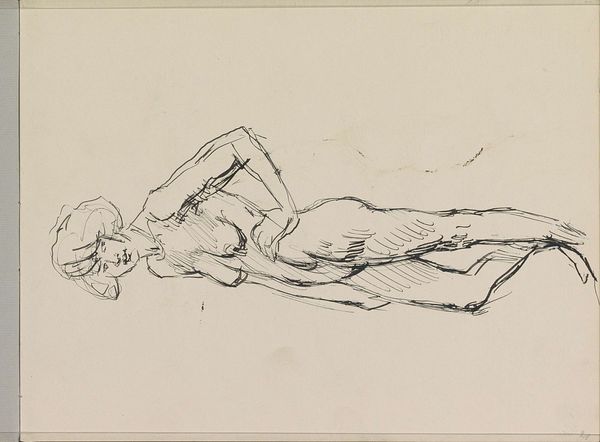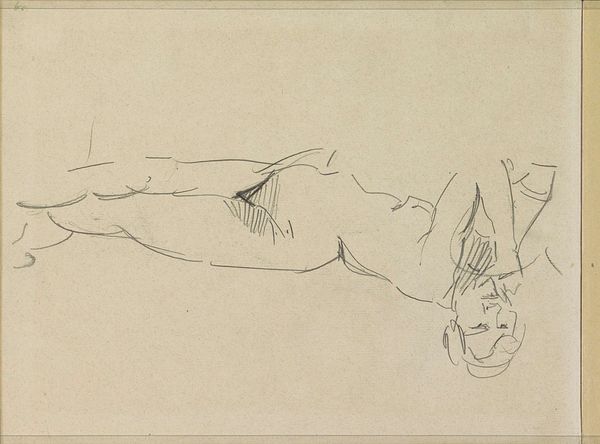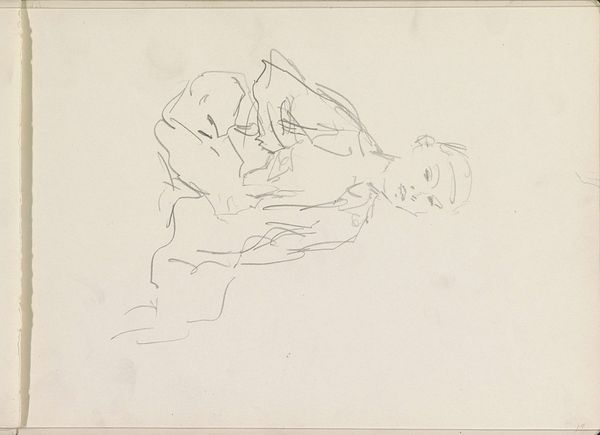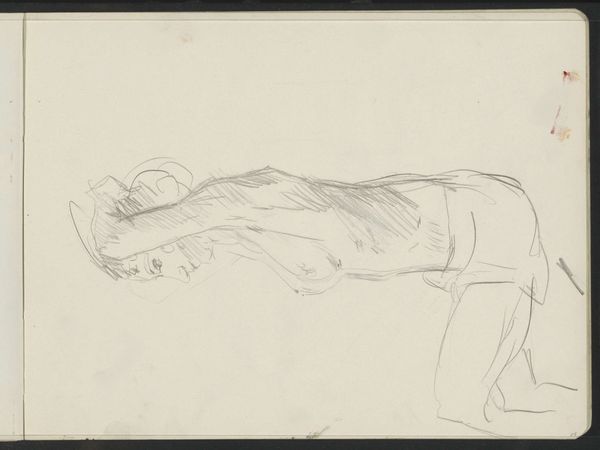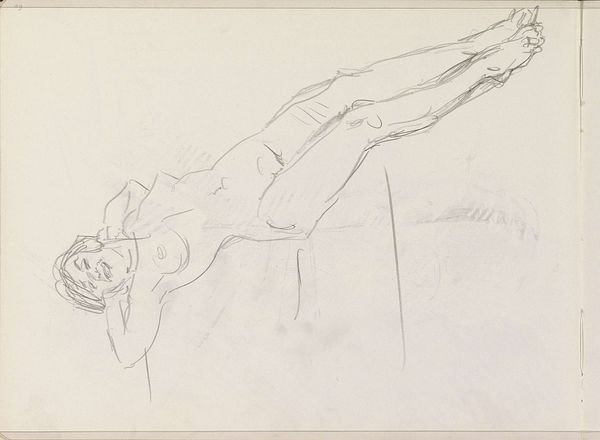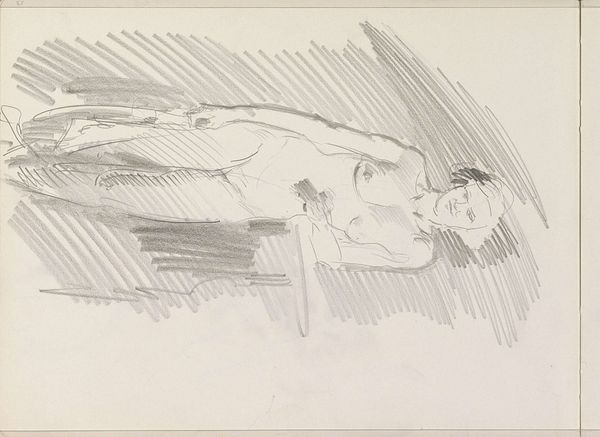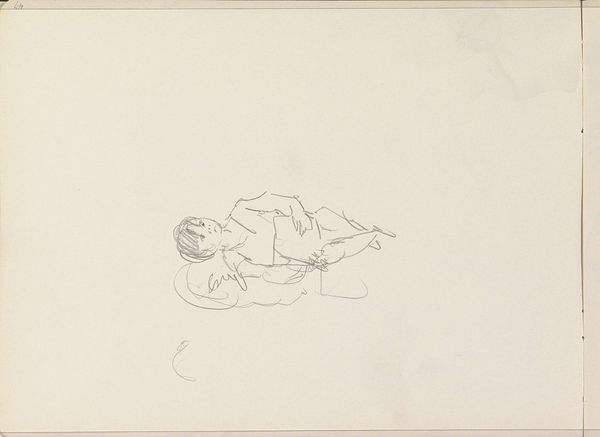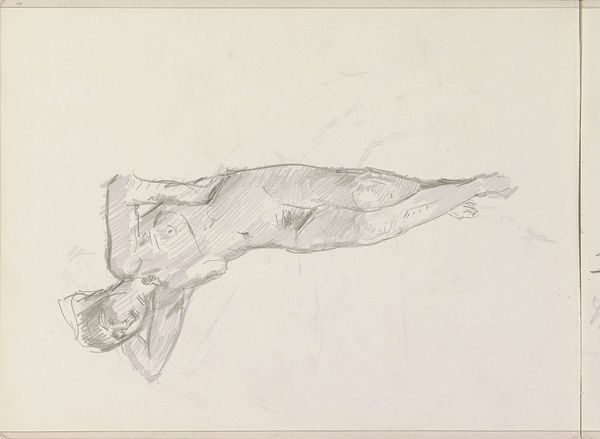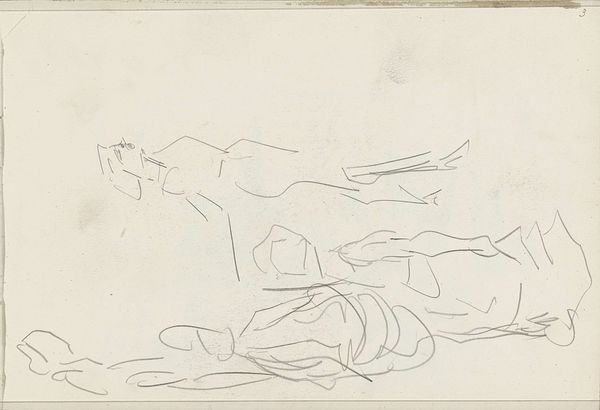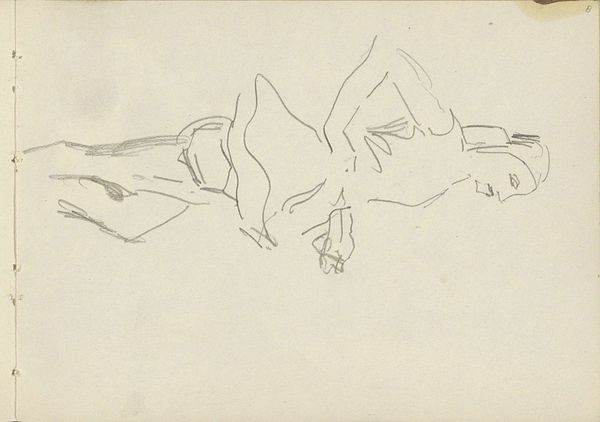
Copyright: Rijks Museum: Open Domain
Editor: This drawing, "Standing Female Nude, Leaning" by Isaac Israels, probably created between 1875 and 1934, is really captivating in its simplicity. I’m struck by the vulnerable pose of the figure. What visual cues or symbols are speaking to you in this work? Curator: This sketch evokes a specific cultural memory, doesn’t it? Consider the pose itself – the slightly arched back, the extended arms. It recalls classical depictions of Venus, but stripped bare, almost raw. What emotional effect does this have on you? Editor: I see what you mean. There's this classic beauty, but made… modern, maybe even a bit uncomfortable? Curator: Precisely. Israels seems to be engaging with, and almost dismantling, traditional ideals of feminine beauty. The quick, loose lines of the pencil suggest immediacy and a break from the highly polished academic style of earlier nudes. Is the arm covering the face symbolic in any way, how might that affect a contemporary audience's reading? Editor: It feels almost defensive, but maybe also a bit like a surrender? Like the figure is both protecting herself, and also exposed in her vulnerability? Curator: That's a key point. How much of what you see is from contemporary influence or do you imagine audiences of that era also understood the body with their own inherited visual symbols? These visual signs speak volumes. It invites contemplation on changing cultural perceptions of the body, its representation, and the evolving role of women in society. What new ideas does this give you regarding his intentions? Editor: It’s making me think about the male gaze, and how that's changed over time. I hadn't considered the audience perspective in that way before. Thanks! Curator: Indeed. A pencil sketch from between 1875-1934 continues to inform us about where we are today.
Comments
No comments
Be the first to comment and join the conversation on the ultimate creative platform.
